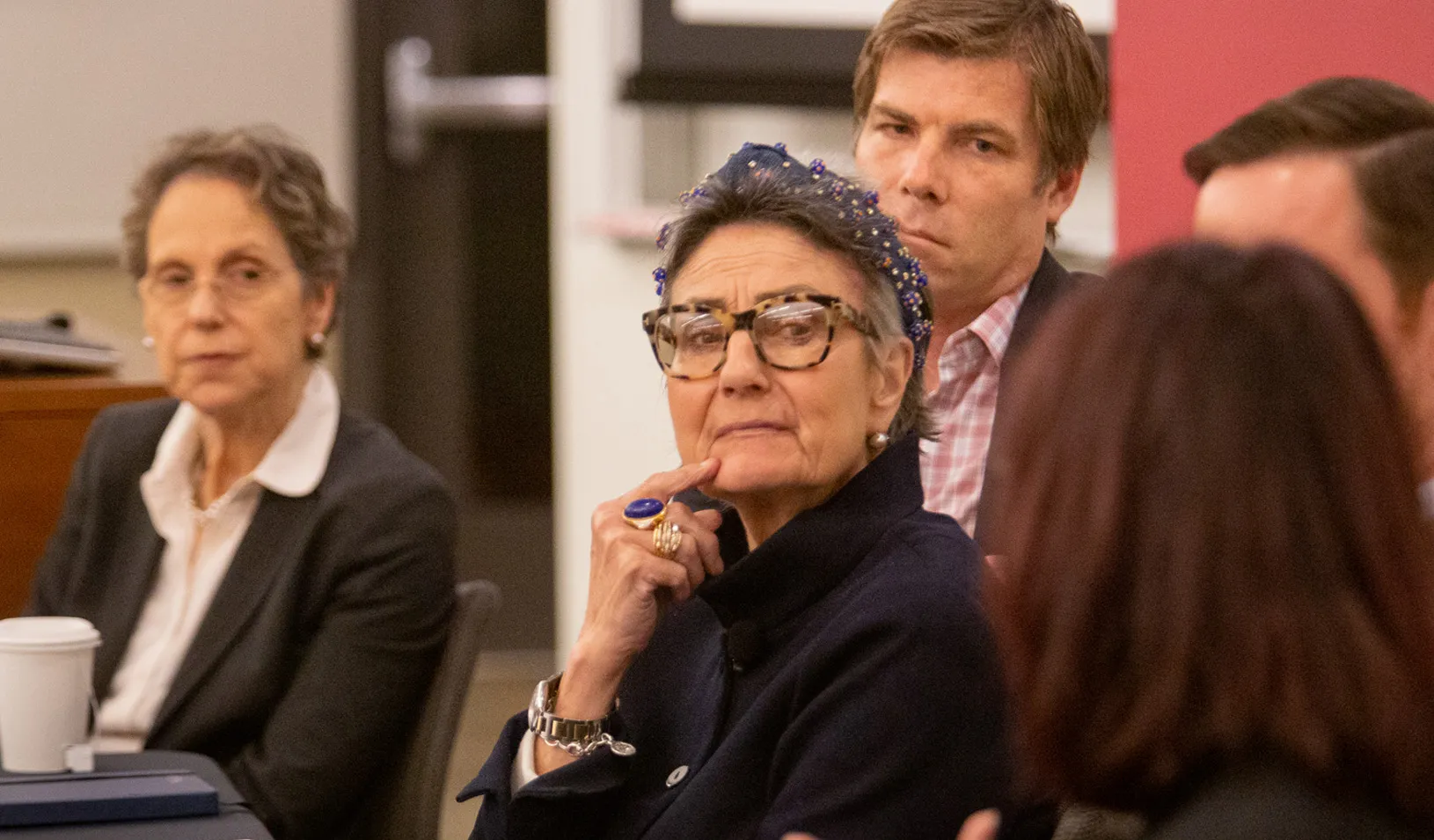
Marybel Batjer, former president of the California Public Utilities Commission, urged policymakers to find new ways to pay for wildfire mitigation, at a recent conference sponsored by the Corporations and Society Initiative. The conference was organized by Stanford GSB professor Anat Admati, left, and Michael Wara, right, policy director of the sustainability accelerator at the Stanford Doerr School of Sustainability. | Saul Bromberger
For Will Abrams, corporate responsibility used to be something he thought about at work, and then left behind. That all changed five years ago, when he and his family ran from the flames of the Tubbs Fire that destroyed thousands of homes in three Northern California counties.
CASI Visiting Speakers
The Corporations and Society Initiative (CASI) hosts a variety of events for members of Stanford GSB, Stanford University, and the broader community to discuss the complex and interacting forces that impact corporations and society.
The experience motivated Abrams to get involved as a community advocate, pushing for policies and legislation that would protect the public from the dangers posed by catastrophic wildfires, which climate change has intensified. At a recent conference at Stanford Graduate School of Business, Abrams was one of seven panelists invited to discuss what to do about Pacific Gas & Electric, California’s largest utility company. PG&E’s aging infrastructure has been blamed for some of the worst fires in the state’s history, including the 2018 Camp Fire that destroyed the town of Paradise and killed 86 people. “For me, this is personal,” Abrams said.
Speaker after speaker at the conference, sponsored by Stanford GSB’s Corporations and Society Initiative, underscored the complexity involved in utility regulation, fire mitigation, risk assessment, and compensation for fire victims. How do you manage the increasing incidence of wildfires while preserving a reliable and resilient power grid? That question and many others remain unanswered.
Stanford GSB dean Jonathan Levin framed the conversation in his opening remarks. “PG&E is almost an ideal case to look at because the issues surrounding PG&E are fundamentally issues about governance and overlapping responsibility, and the intersection of different stakeholders,” he said. “These are issues with a lot of complexity, a lot of history, and no simple solution.”
Rising temperatures and persistent drought, exacerbated by decades of fire suppression, have resulted in longer and deadlier fire seasons in California and throughout the West. And more people than ever are in harm’s way because of policies that allowed houses to be built in high-risk hazard areas. The combustible result, said Michael Picker, former president of the California Public Utilities Commission, raises new concerns about how to reconcile public safety and utility company accountability with the state’s mandate to supply energy to all potential customers.
“The whole time I was there I was asking myself, ‘Is an economic regulator the place where you really get at safety?’” Picker said. “Our job was to allow the utility to adequately charge for the infrastructure that they were putting in place. We don’t know anything about fires.”
Moreover, he noted, the conditions under which the CPUC operates are largely out of their control. “Fifty percent of all new housing in California between 2010 and 2020 is in areas that we later recognized to be in hazardous or extremely hazardous wildfire areas. Every one of those distribution lines is required by law to go into places that the CPUC does not decide is safe.”
Katherine Blunt, a Wall Street Journal reporter whose book California Burning examines PG&E’s failures, said a combination of deregulation in the 1990s and incentives that pushed the company to maximize profits at the expense of safety measures led to “the definition of a systemic breakdown.” Faced with billions of dollars in liability after the spate of recent wildfires, PG&E was forced into bankruptcy, where various financial interests maneuvered for access to money from the state’s newly established “wildfire fund” that aimed to keep utility companies solvent. The losers, ultimately, were fire victims, Blunt said. “There was a settlement for fire victims that was really unsatisfactory, to say the least.”
In a typical bankruptcy situation, the company would shut down and the assets would be liquidated. “But we can’t shut down our electric utilities; we need electric service,” said Michael Wara, policy director of the sustainability accelerator at the Stanford Doerr School of Sustainability. “It keeps people alive.”
Governing the utilities and wildfire mitigation is essentially an exercise in allocating risk, Wara said. Who should bear it, and what are the implications of those decisions? “We really need to think about this holistically.”
However, the essential nature of the services utilities provide should not preclude making them accountable. “I’m a huge believer in the leadership of investor-owned utilities facing the consequences of their actions,” Wara said. “We need to create incentives that create long-run consequences for that management and the board.”
Policymakers must find a new way to pay for the cost of wildfire mitigation, said Marybel Batjer, former president of the CPUC. Those costs in the last year alone were $24 billion. “Who pays for that — ratepayers. This is absolutely unsustainable.”
Much more data is needed to develop improved models of fire risk, added Nancy Watkins, an insurance actuary and a principal at the Milliman consulting firm. “If we have the data, we will have a better way of modeling community risk, which is a big step in the direction of mitigating community risk.”
For media inquiries, visit the Newsroom.






